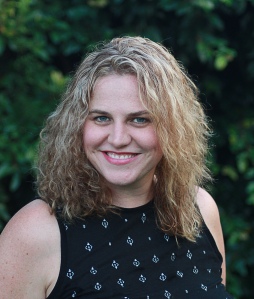Thank you, Serene, for your time and for sharing a bit about yourself & your writing journey.
Quick Qs
Dark Chocolate or Milk Chocolate? Dark chocolate.
Coffee or Tea?Tea for sure. There’s nothing better than books and tea 🙂
Dog-ear or whatever else as bookmark?
Anything for a bookmark. No dog ears! I have heaps of lovely bookmarks, but I often end up using envelopes, scraps of paper, a shopping list or whatever’s at hand – I just found a book I’d been searching for, and it had one of those moisturiser samples from a magazine marking my place…
Plot or Character? They’re so intertwined, but if I had to choose I guess I’d say character.
HEA or unexpected twist? Unexpected twist…
Q: Could you please share with us a little bit about yourself and how you became a writer? Was there a particular book you loved as a child or how did your love of words translate to writing?
A: I’m shy, so writing has always been the way I communicate, and the way I make sense of the world. Mum still has a little story I made into a book when I was a kid, about saving the seals 🙂 I wanted to help people, so I was planning to be a social worker, but Dad convinced me I could help more people through words. And that’s what still motivates me to write – when I was a journalist I got letters from teenagers who told me my articles helped them deal with a traumatic event or decide not to commit suicide, and as an author I’ve had a lot of readers contact me to let me know how much one of my books has helped them heal too.
In high school I wrote for a national surfing magazine, at uni (I studied politics and journalism) I was the first student editor of their newspaper, and spent way more time writing articles than going to class, and after that I was a journalist for years – writing about everything from health and social issues to entertainment and spiritualty. A publisher I worked with when I was in magazines offered me a book contract when I left one of my jobs, and that’s how I became an author.
Some of my favourite childhood books were Mandy by Julie Edwards, about a girl in an orphanage who found a little cottage in the woods she escaped to, Searching For Shona by Margaret J Anderson, about two girls who switch places during the war, and one who refuses to give the identity back at the end, and A Time To Love, A Time to Mourn by Paige Dixon, about a teenager with a rare and fatal disease… Which I realise as I write that, all have a sense of tragedy, yet also hope, which is true of my books too. (Hence the unexpected twist not the HEA – I like a book that makes me cry, but also uplifts me…)
Q: Could you share a little of what this trilogy is about and what inspired you in in writing it? Was there a purpose or a target audience you are seeking to reach?
A: I’d written five non-fiction books before I decided to see if I could write a novel, and Into the Mists was woven out of the research I did for Seven Sacred Sites, Faery Magic and Witchy Magic. It’s about death and loss, but also about healing, the bonds of family, the power of friendship and the magic of the natural world, and how that can heal and inspire us. I thought it would just be one small novel, but it turned into a trilogy, and then people asked about some of the other characters, and that spawned another trilogy.
In the beginning the audience was people who loved my non-fiction, but now it’s everyone from young girls at Supanova to men and women of all ages from around the world. With all my books, I want to acknowledge that there is sadness in life, but also hope. It’s always important to me that strong friendships are portrayed, that forgiveness and redemption is possible, and that love can heal. It was also interesting timing that the second trilogy, Into the Storm, launched in the time of #metoo and #timesup, as there is a strong thread of that through these books, and the feedback on that in terms of helping people who have experienced assault and harassment has been really touching.
Q: As I have mentioned to you previously, I found it truly difficult in the first half of the book due to all the grief and anger Carlie was going through. Have you experience such grief yourself and/or how did you research into this?
A: I’m so sorry you found it hard! Fortunately I haven’t lost anyone like Carlie has, but I have been overwhelmed by the response of readers to it. Several people have come up to me at events to hug me, and thank me, and burst into tears as they tell me how much it helped them deal with their own grief, which I wasn’t expecting at all. A husband told me how grateful he was, because when his wife lost her mum she was inconsolable, and he didn’t know how to help her, but apparently the Mists books did. So whenever I’m feeling discouraged, or the writing is hard, I remember those things, because to me it is worth it if it helps even one person… There are others who thank me because the books reminded them of who they are, and got them to re-engage with nature or magic or ritual, and then there are the people who just love the story and the mystery of it and that’s great too 🙂
With the research, I did a bereavement counselling course, and read a fair bit, and I’ve done energy healing courses and workshops, and rituals with shamans and druids and pagan priestesses, and that all contributed too…
Q: In Into the Mists, I could read your sincerity in all things pagan and the note at the end of the book also acknowledged that you are a pagan. Could you please share your experience on how you came to your belief?
A: Paganism is an earth-honouring spiritual path of personal growth and self-discovery, a connection to nature, to the rhythms of the earth and the cycles of the sun, moon and seasons, and a belief in the interconnectedness of people, animals and the land. I was born in Sydney, but when I was six my family moved to a tiny little town on the other side of the country, because they didn’t want to raise my sister and I in the city. So I grew up on a bush property on the river, near the beach, revelling in nature, campaigning with Dad to protect it, and doing healing work with Mum. (My parents were hippies, which I’m sure contributed to my pagan outlook!) A pagan is simply someone who walks lightly on the earth and strives to be kind and compassionate. Who takes responsibility for their own life and their own actions. Who is aware of the impact of word, thought and deed. Someone who understands that there is magic in every moment, if we stop to look, to breathe it in, and to unlock all the potential and promise we hold within. It’s about the magic of the earth, the magic of science and nature. Many pagans are environmentalists, working to protect the earth and its creatures, or they are healers or psychics – or all three – for it’s a path of learning, a search for wisdom and inner knowledge, and a quest to uncover personal truths and meaning. Pagans honour the phases of the moon and the changing of the seasons as metaphors for their own life, and perform rituals as a shaping of intention, and a way to express gratitude for their life, their loved ones and all they have achieved.
Q: What are your top reads for 2019 to date? And which book are you desperately waiting for publication?
A: I’m aiming for a book a week this year (so far so good!), and I’ve already read some wonderful stories. Paula Brackston’s Lamp Black, Wolf Grey, Anne Rice’s Blood Communion, Deborah Harkness’s A Discovery of Witches (thanks to Read3rz Revu for the reminder that I had it!), Jodi McIsaac’s Bury the Living, and DL Richardson’s One Little Spell, amongst others.
Juliet Marillier is my favourite author, and she has TWO new books out this year, which I’m desperately waiting for! I can’t wait for The Harp of Kings, the first in her new Warrior Bards series, which is out in September, and she also wrote a new novel, Beautiful, that is coming out as an audiobook exclusive at the end of May. Squeee!
Q: What are your top reads for 2019 to date? And which book are you desperately waiting for publication?
A: So far this year I’ve really enjoyed The Seven Deaths of Evelyn Hardcastle by Stuart Turton, which is an intriguing time-slip mystery about a man reliving a day again and again in different bodies, and Educated by Tara Westover, an extraordinary memoir about learning and change. I’m really looking forward to The Parade, by Dave Eggers, as his books are always both meticulously crafted and full of interesting ideas about the way we live now.
Q: What are you working on now? Or what can we look for from you next?
A: At the moment I’m finishing Into the Air, which is book three of the Into the Storm Trilogy. It will be sad in a way, to say farewell to these characters I’ve lived with for six years (the Into the Mists Trilogy is set in the same world), but I’m really excited about a couple of new projects I’m about to begin – an Australian faerytale of sorts, and a fantasy series with two friends. We’re off on a writing retreat next week to get started!
Q: “Well, cooking is definitely a witchy skill,” ~ said Rose (Carlie’s grandmother)
Lastly, and just for fun, could you please share a favourite recipe for the upcoming festival which I believe is Ostara?
A: Of course. Mabon was March 21, and I put some recipes for Mabon (the autumn equinox), which is Ostara (the spring equinox), in the northern hemisphere, on my website for you – then I missed getting this to you in time, sorry! They’re here if you want to include any, www.blessedbeebooks.com/mabon-recipes and www.blessedbeebooks.com/ostara-recipes…
The next seasonal celebration for Australians is Samhain, the beginning of winter, in the first week of May (and the first week of November in the northern hemisphere, which is where most of the Halloween traditions come from), so I’ve included a bunch for you in a separate document, if you want to include any… In the northern hemisphere the next seasonal celebration is Beltane, which has some cute recipes, so I’ll send you some of those too…
And the Mabon ones below are also perfect for Samhain…

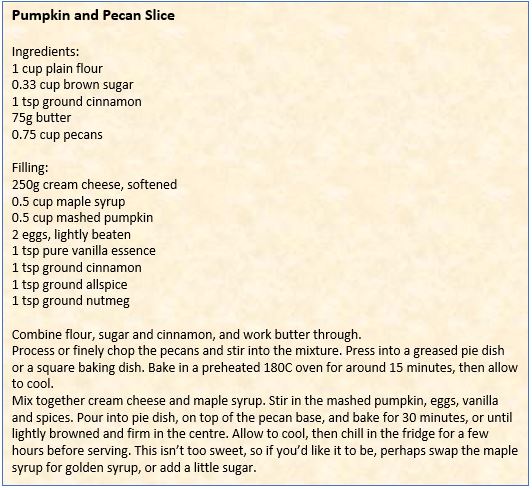
About the author
Serene Conneeley is an Australian writer with a fascination for history, travel, ritual and the myth and magic of ancient places and cultures. She’s written for magazines about news, travel, health, spirituality, entertainment and social and environmental issues, is editor of several preschool magazines, and has contributed to international books on history, witchcraft, psychic development and personal transformation.
She is the author of the non-fiction books Seven Sacred Sites, A Magical Journey, The Book of Faery Magic, Mermaid Magic, Witchy Magic and Into the Mists: A Journal, and creator of the meditation CD Sacred Journey. The Into the Mists Trilogy was her first adventure into fiction, and she is currently finishing three Into the Mists Chronicles.
Serene is a reconnective healing practitioner, and has studied medicinal and magical herbalism, bereavement counselling, reiki and many other healing modalities, plus politics and journalism. She loves reading, rainbows, drinking tea with her friends, and celebrating the energy of the moon and the magic of the earth. Her pagan heart blossomed as she climbed mountains, danced in stone circles, trekked along pilgrimage paths, wandered through ancient cathedrals and stood in the shadow of the pyramids on her travels, and she’s also learned the magic of finding true happiness and peace at home.

 Q: I don’t know much about famous paintings though this Doctor Gachet looks vaguely familiar. How did it actually come to your attention? So much so that you’re inspired to write about it?
Q: I don’t know much about famous paintings though this Doctor Gachet looks vaguely familiar. How did it actually come to your attention? So much so that you’re inspired to write about it? Q: I found the structure of this novel to be very interesting. The alternate chapters between Doctor Gachet himself with journeys of the painting and narrator. Is this narrator yourself? How did you come to structure the novel in such a way?
Q: I found the structure of this novel to be very interesting. The alternate chapters between Doctor Gachet himself with journeys of the painting and narrator. Is this narrator yourself? How did you come to structure the novel in such a way? Sam Meekings grew up near the south coast of England. He took an undergraduate degree in Modern History and English Literature at Mansfield College, Oxford University and, later, a Masters degree in Creative Writing at Edinburgh University. In 2005 he moved to China where he worked as a teacher and editor. He recently moved to Qatar with his wife and family to take up a post as Lecturer in poetry and creative writing at Qatar University. In 2006 and 2007 Sam was longlisted for an Eric Gregory Award for poets under 30.
Sam Meekings grew up near the south coast of England. He took an undergraduate degree in Modern History and English Literature at Mansfield College, Oxford University and, later, a Masters degree in Creative Writing at Edinburgh University. In 2005 he moved to China where he worked as a teacher and editor. He recently moved to Qatar with his wife and family to take up a post as Lecturer in poetry and creative writing at Qatar University. In 2006 and 2007 Sam was longlisted for an Eric Gregory Award for poets under 30. Q: In Lightning Tracks, you’ve brought the Roman Empire to Australia, mix in Aboriginal stories, and set it in this present time. You obviously love history and specifically Roman & Australia history? How did this come about and what in particular did you love about Roman & Australia histories?
Q: In Lightning Tracks, you’ve brought the Roman Empire to Australia, mix in Aboriginal stories, and set it in this present time. You obviously love history and specifically Roman & Australia history? How did this come about and what in particular did you love about Roman & Australia histories? A: I’m currently reading Found by Fleur Ferris (I adore her work). I’ve ordered Ellie Marney’s Circus Hearts series (they haven’t arrived in the mail yet but I’m looking forward to reading these beauties), and I am always awaiting the next Patrick Ness.
A: I’m currently reading Found by Fleur Ferris (I adore her work). I’ve ordered Ellie Marney’s Circus Hearts series (they haven’t arrived in the mail yet but I’m looking forward to reading these beauties), and I am always awaiting the next Patrick Ness. I’m a writer/teacher/archaeologist/jack-of-all-trades. My latest book Lightning Tracks is a dark YA alternative history/fantasy novel set in Australia. You can read an extract on my website. I’ve also got a little educational textbook about Australian archaeology, Ancient Australia Unearthed.
I’m a writer/teacher/archaeologist/jack-of-all-trades. My latest book Lightning Tracks is a dark YA alternative history/fantasy novel set in Australia. You can read an extract on my website. I’ve also got a little educational textbook about Australian archaeology, Ancient Australia Unearthed. Stone Girl was influenced by the homes I lived in as a teenager, the people I met and the vantage point I had on society. It was a story that followed me around long after I tried to forget it. I felt compelled to write it. It wouldn’t leave me alone.
Stone Girl was influenced by the homes I lived in as a teenager, the people I met and the vantage point I had on society. It was a story that followed me around long after I tried to forget it. I felt compelled to write it. It wouldn’t leave me alone. Eleni Hale was a reporter at the Herald Sun, a communications strategist for the union movement and has written for many print and online news publications. Her short story fig was published as part of the ABC’s In their branches project and she has received three Varuna awards. She lives in Melbourne, and is currently working on her second book. Stone Girl is her first novel.
Eleni Hale was a reporter at the Herald Sun, a communications strategist for the union movement and has written for many print and online news publications. Her short story fig was published as part of the ABC’s In their branches project and she has received three Varuna awards. She lives in Melbourne, and is currently working on her second book. Stone Girl is her first novel. A:
A:  Australian author, Nadia L King, was born in Dublin, Ireland. Nadia is a YA author and short story writer. She is passionate about using stories to connect with teens.
Australian author, Nadia L King, was born in Dublin, Ireland. Nadia is a YA author and short story writer. She is passionate about using stories to connect with teens.  from the ‘slush pile’ of an independent press, which gave me great insights into revision and editing as well as invaluable industry experience. My second novel was selected to participate in the QWC/Hachette Australia Manuscript Development Program in 2013, and it was after this that I signed with my agent and was offered a two-book contract with Pan Macmillan Australia – those books are Like I Can Love and The Three of Us.
from the ‘slush pile’ of an independent press, which gave me great insights into revision and editing as well as invaluable industry experience. My second novel was selected to participate in the QWC/Hachette Australia Manuscript Development Program in 2013, and it was after this that I signed with my agent and was offered a two-book contract with Pan Macmillan Australia – those books are Like I Can Love and The Three of Us.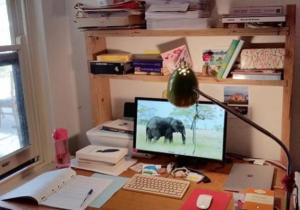
 Q: I see you also work as freelance graphic designer, did you design your own covers and/or how much say do you have with your covers?
Q: I see you also work as freelance graphic designer, did you design your own covers and/or how much say do you have with your covers? you, Kim?
you, Kim?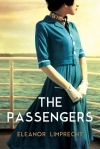 And no doubt 2018 will deliver plenty of excellent books, but here’s just a few I’m looking forward to: The Passengers by Eleanor Limprecht (March); Trick of the Light by Laura Elvery (March); You Wish by Lia Weston (April); and, later in the year, new books from Sarah Ridout and Les Zig.
And no doubt 2018 will deliver plenty of excellent books, but here’s just a few I’m looking forward to: The Passengers by Eleanor Limprecht (March); Trick of the Light by Laura Elvery (March); You Wish by Lia Weston (April); and, later in the year, new books from Sarah Ridout and Les Zig.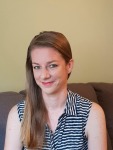 About the author
About the author A:
A:  Elizabeth Foster read avidly as a child, but only discovered the joys of writing some years ago, when reading to her own kids reminded her of how much she missed getting lost in other worlds. Once she started writing, she never looked back. She’s at her happiest when immersed in stories, plotting new conflicts and adventures for her characters. Elizabeth lives in Sydney, where she can be found scribbling in cafés, indulging her love of both words and coffee.
Elizabeth Foster read avidly as a child, but only discovered the joys of writing some years ago, when reading to her own kids reminded her of how much she missed getting lost in other worlds. Once she started writing, she never looked back. She’s at her happiest when immersed in stories, plotting new conflicts and adventures for her characters. Elizabeth lives in Sydney, where she can be found scribbling in cafés, indulging her love of both words and coffee. I had been thinking about the main themes behind Refuge for about a year before I started to write it. I knew that I wanted to write for an early teen audience and the message that I wanted to convey. My studies and experiences as a teacher, combined with my own childhood memories, had provided an insight into the psychology of youth and the challenges and dangers young people face. It is often a very turbulent time in a person’s life, fraught with challenges and issues around identity and self- worth. If you throw in any kind of instability it can be very easy for a young person to become lost, confused, or lured into dangerous situations. Sometimes they are irrevocably altered, or lost forever. Although the narrative of Refuge is an adventure story, I also wanted it to highlight these themes and serve as a cautionary tale.
I had been thinking about the main themes behind Refuge for about a year before I started to write it. I knew that I wanted to write for an early teen audience and the message that I wanted to convey. My studies and experiences as a teacher, combined with my own childhood memories, had provided an insight into the psychology of youth and the challenges and dangers young people face. It is often a very turbulent time in a person’s life, fraught with challenges and issues around identity and self- worth. If you throw in any kind of instability it can be very easy for a young person to become lost, confused, or lured into dangerous situations. Sometimes they are irrevocably altered, or lost forever. Although the narrative of Refuge is an adventure story, I also wanted it to highlight these themes and serve as a cautionary tale.
 character called ‘Door’, who has the ability to open anything. Neverwhere is an exciting, intriguing and mysterious tale in which an act of kindness leads a misfit to discover a world beneath London. I love the symbolism in this story, particularly of the ways in which experience can shape and change us.
character called ‘Door’, who has the ability to open anything. Neverwhere is an exciting, intriguing and mysterious tale in which an act of kindness leads a misfit to discover a world beneath London. I love the symbolism in this story, particularly of the ways in which experience can shape and change us.
 beginning with the lovely round one in Bilbo’s hobbit hole. The Fellowship are always stepping, or falling through openings and ending up in unexpected places. I particularly like the abundance of secret, or hidden doorways, that often belie the nature of the place that they lead to. The magnificent gate to the Mines of Moria is an image that has stayed with me since my first reading.
beginning with the lovely round one in Bilbo’s hobbit hole. The Fellowship are always stepping, or falling through openings and ending up in unexpected places. I particularly like the abundance of secret, or hidden doorways, that often belie the nature of the place that they lead to. The magnificent gate to the Mines of Moria is an image that has stayed with me since my first reading.
 I began to write in 2009, finished A Stranger in my Street in January 2011, and by April 2011 I had an agent and a publisher. So I can’t share any stories about having to paper my walls with rejections.
I began to write in 2009, finished A Stranger in my Street in January 2011, and by April 2011 I had an agent and a publisher. So I can’t share any stories about having to paper my walls with rejections.

